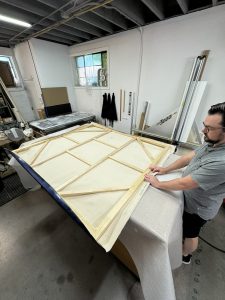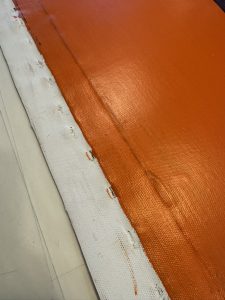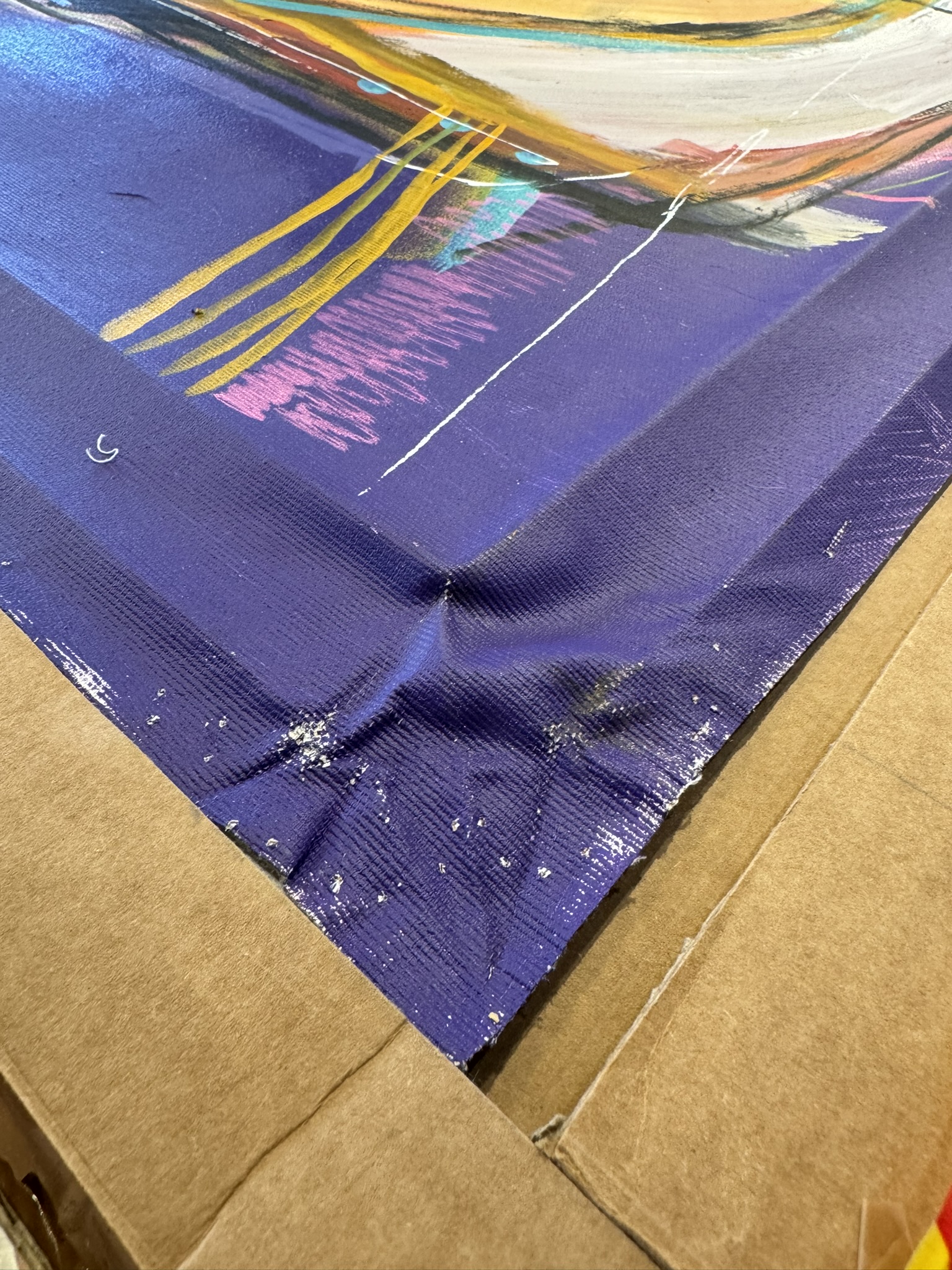Do We Stretch Canvas?
It’s a question we get quite often, and I’m always a bit surprised by it, as stretching canvas is something we do so frequently that it feels like second nature. We provide stretching services for both new canvas for artists, as well as re-stretching existing paintings for a variety of reasons. Whether it’s for restoration, transportation, or simply to ensure a perfect fit, canvas stretching is a fundamental part of our work.

Why Do We Stretch Canvas?
We sometimes need to stretch a canvas because it has been mounted on stretcher bars that aren’t square. This can happen if the original construction wasn’t quite precise, or perhaps over time the bars have warped. At our studio, we believe in building perfect ninety-degree angles for optimal stability and appearance. So, in these cases, we carefully remove the canvas from the old stretcher bars, construct a new, custom-sized strainer (the wooden framework the canvas is stretched over), and carefully re-stretch the canvas. This ensures that the final result is not only taut and professional but also squared properly to preserve the integrity of the artwork.
Re-stretching: A Common Need
The most frequent scenario we deal with, however, involves re-stretching paintings that have been purchased from distant locations. Our wonderful clients, many of whom travel internationally or buy art from far-flung places, often face the challenge of shipping a painting with its original stretcher bars intact. Shipping a painting with its bars still on can be expensive, and it often results in potential damage to the artwork. Shipping costs can add up quickly, and the risk of the artwork being harmed in transit increases significantly when it’s shipped on its original stretcher bars.
To avoid this, we recommend that clients have the canvas removed from the stretcher bars before shipping. The canvas should be packed flat between layers of sturdy cardboard or rolled in the safest and most robust tube possible to minimize the risk of damage during transport. This method not only reduces shipping costs but also ensures that the painting reaches its destination in excellent condition, ready to be res-tretched and displayed beautifully once again.



Tips for Shipping Canvas Artwork:
If you’re planning on purchasing a painting that you need to ship, here are some essential tips for ensuring that the artwork is protected and arrives safely:
- Remove the Canvas from the Stretcher Bars:
If the canvas is stapled to the bars, be sure to have the staples removed. This is the most careful and time-consuming way to get the canvas off the bars. While it might seem like an easier option to cut the canvas off along the inside of the staples, this method can be risky. If the canvas is cut, it may leave you with too little material to properly re-stretch the artwork when it arrives at its destination. Taking the time to remove the staples allows for a cleaner, more secure re-stretching process once the painting reaches its new home. - Ship the Canvas Flat:
Whenever possible, try to ship the canvas flat. This is the safest option, particularly for older or delicate artworks. If the painting is very old and fragile or very new and still drying, rolling it up could cause cracking. To ship the canvas flat, place it between two sheets of glassine (a smooth, archival paper), then add a layer of bubble wrap or foam to cushion it. Sandwich the wrapped canvas between several large pieces of cardboard, ensuring the cardboard extends several inches beyond the edges of the canvas on all sides. Use packing tape to securely fasten the edges, ensuring that everything stays in place. - Rolling the Canvas for Shipment:
If shipping the canvas flat is not feasible due to size or other constraints, rolling the canvas is the next best option. For this method, it is critical to roll the canvas with the painting facing outward, as this reduces stress on the surface of the artwork. Start by laying the canvas between two sheets of glassine, then gently roll the canvas around a sturdy tube. Be sure to roll as loosely as possible to avoid creasing or causing unnecessary pressure on the artwork. After rolling, add a layer of bubble wrap for added protection and tape it securely so it doesn’t unroll during transit. Finally, place the rolled canvas inside a second, larger, heavy-duty tube. Depending on availability, you can use either a thick cardboard tube or a PVC tube, both of which offer excellent protection. If the outer tube is significantly larger than the canvas roll, fill any excess space with additional bubble wrap to prevent the roll from shifting during transport.
When You Receive the Artwork:
Depending on the size and packaging, you should avoid attempting to open the package yourself. Opening large artworks requires careful handling, and we have large, clean tables in our studio specifically designed for this process. We carefully unbox the artwork, inspect it for any potential issues, and diagnose any concerns that may arise. This ensures that when the artwork is restretched, it is in the best possible condition and ready for display.
We can’t wait to see what you bring us from your next adventure!






